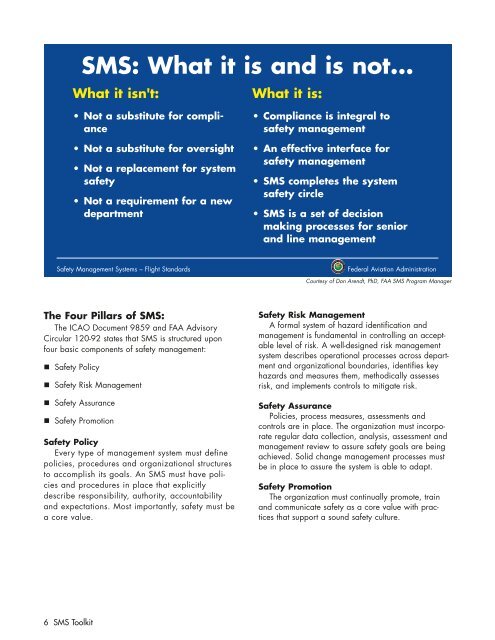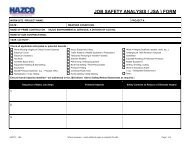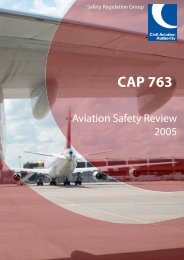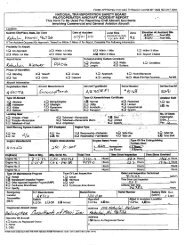International Helicopter Safety Team Safety Management System Toolkit
IHST - Safety Management Toolkit - Skybrary
IHST - Safety Management Toolkit - Skybrary
- No tags were found...
You also want an ePaper? Increase the reach of your titles
YUMPU automatically turns print PDFs into web optimized ePapers that Google loves.
SMS: What it is and is not...<br />
What it isn't:<br />
What it is:<br />
• Not a substitute for compliance<br />
• Not a substitute for oversight<br />
• Not a replacement for system<br />
safety<br />
• Not a requirement for a new<br />
department<br />
• Compliance is integral to<br />
safety management<br />
• An effective interface for<br />
safety management<br />
• SMS completes the system<br />
safety circle<br />
• SMS is a set of decision<br />
making processes for senior<br />
and line management<br />
<strong>Safety</strong> <strong>Management</strong> <strong>System</strong>s – Flight Standards<br />
Federal Aviation Administration<br />
Courtesy of Don Arendt, PhD, FAA SMS Program Manager<br />
The Four Pillars of SMS:<br />
The ICAO Document 9859 and FAA Advisory<br />
Circular 120-92 states that SMS is structured upon<br />
four basic components of safety management:<br />
<strong>Safety</strong> Policy<br />
<strong>Safety</strong> Risk <strong>Management</strong><br />
<strong>Safety</strong> Assurance<br />
<strong>Safety</strong> Promotion<br />
<strong>Safety</strong> Policy<br />
Every type of management system must define<br />
policies, procedures and organizational structures<br />
to accomplish its goals. An SMS must have policies<br />
and procedures in place that explicitly<br />
describe responsibility, authority, accountability<br />
and expectations. Most importantly, safety must be<br />
a core value.<br />
<strong>Safety</strong> Risk <strong>Management</strong><br />
A formal system of hazard identification and<br />
management is fundamental in controlling an acceptable<br />
level of risk. A well-designed risk management<br />
system describes operational processes across department<br />
and organizational boundaries, identifies key<br />
hazards and measures them, methodically assesses<br />
risk, and implements controls to mitigate risk.<br />
<strong>Safety</strong> Assurance<br />
Policies, process measures, assessments and<br />
controls are in place. The organization must incorporate<br />
regular data collection, analysis, assessment and<br />
management review to assure safety goals are being<br />
achieved. Solid change management processes must<br />
be in place to assure the system is able to adapt.<br />
<strong>Safety</strong> Promotion<br />
The organization must continually promote, train<br />
and communicate safety as a core value with practices<br />
that support a sound safety culture.<br />
6 SMS <strong>Toolkit</strong>







